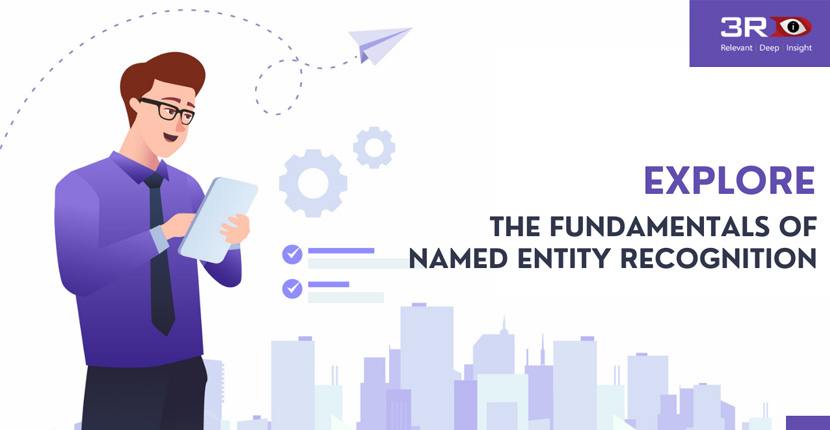
A Brief Introduction to Named Entity Recognition
Named Entity Recognition (NER) is a form of data extraction that is about finding and classifying named entities in unstructured data into pre-defined classes known as named entities. We need to recognize named entities in order to extract structured information from unstructured text. A named entity is something that has a legitimate name. Some examples are quantities, time expressions, names, locations, organizations and the likes. It is also referred to as entity extraction or named entity identification. Named Entity Recognition is a concept based on Natural Language Processing (NLP). The new age enterprise search platforms are powered by Named entity recognition for next level of text analysis.
The algorithm for Named Entity Recognition classifies unstructured text data into categories and extracts information from it. Natural Language Processing investigates the structure and laws of language and creates smart frameworks for extracting meaning from speech and text, whereas Machine Learning helps machines to learn and get better through time. Sorting the data by recognizing and setting up the named entities referenced in the sentences, phrases and the document as a whole, is the first step in named entity recognition. The next stage is to go over the elements that can be referred to in the document. Multiple pages, names and other data is also taken into account when determining similar words.
The purpose of NER is to use text documents to label names of people, places, organizations, and other items of interest. There are 3 approaches for NER: lexicon-based, rule-based, or machine learning-based. A NER system may combine more than one of these types. POS tagging is used in several NER techniques. NER is also used as a preprocessing step for applications like data extraction.
How Named Entity Recognition Works
We intuitively recognize identified items such as individuals, values, locations, and so on when we read a text. For example, in the sentence "Sundar Pichai is the CEO of Google, a company that is the global Search Engine giant with its headquarters in the United States" we can identify three types of entities:
- Entity 1 - Person: Sundar Pichai
- Entity 2 - Company: Google
- Entity 3 - Headquarters: United States
However, we must first assist computers in recognizing entities so that they can categorize them. Machine learning and Natural Language Processing (NLP) are used to do this.
Machine learning helps machines learn and develop over time, while NLP analyses the structure and norms of language and creates intelligent systems capable of deriving meaning from text and speech. An NER platform must be able to recognize a word or group of words that comprise an entity (e.g. Google) and know which entity category it belongs to in order to learn what it is.
Hence, to begin with, we must establish entity categories such as Name, Geography, Occasion, Company, and so on, and then feed relevant training data to a NER model. After that, you may teach your NER model to detect entities by tagging some sample words and phrases samples coupled with their matching entities.
Applications of Named Entity Recognition
Now that we have looked at how the Named Entity Recognition technology works, let’s have a look at some of real-world applications of Named Entity Recognition.
- Using new age corporate search solutions like 3RDi Search, named entity recognition can assist businesses in categorizing their data into pre-defined entities.
- Named Entity Recognition platforms can help you automate pre-defined customer care processes like categorizing customers' complaints and requests, saving you time and helping you enhance the rate of complaint resolution and boost customer satisfaction.
- Named Entity Recognition platforms can be used to organize all of the customer reviews and spot problems that come up repeatedly, providing valuable insights into what your customers like about your products and what they don't, as well as the elements of your business that you need to work upon.
- Named Entity Recognition can offer recommendations based on a user's search history and on a variety of content sources, including blogs, videos, and movies.
- Named entity recognition helps recruitment teams in quickly extracting the most pertinent details about candidates from their resumes, such as personal and professional information.
- Named Entity Recognition has the ability to scan entire articles automatically for the identification of key people, organizations, and places mentioned, making it simple to define news content.
Final Word
Named Entity Recognition is one of many ways for extracting information from unstructured data. The most common way to start with named entity recognition is to use entity extraction APIs using a sophisticated text mining platform. However, the optimal solution will be determined by your expertise, requirements and resources. If you’re looking for a powerful text mining platform to implement Named Entity Recognition, visit www.3rdisearch.com/ or drop us an email on info@3rdisearch.com and our team will get in touch wit you.